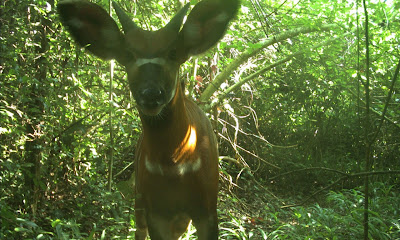Sudan is the Origin of Humanity, Says Oxford Study
Khartoum, Jan 1, 2023 (Sudanow) - It is well known that all humans alive today can be traced back to a common ancestor but a study may have found where that ancestor originates.
Researchers at the University of Oxford’s Big Data Institute mapped the entirety of genetic relationships among humans to create the largest human family tree ever.
By combining modern and ancient human genomes data from eight different databases, the researchers were able to create a massive family tree.
This allowed them to see how a person’s genetic sequence relates to another using the points of the genome.
Everybody alive today came from one African country
Everybody alive today came from Sudan, according to study
“Essentially, we are reconstructing the genomes of our ancestors and using them to form a vast network of relationships,” Lead author Dr Anthony Wilder Wohns said.
“We can then estimate when and where these ancestors lived.”
Where they lived? Sudan, Africa.
All humans may have originated in modern-day Sudan, according to a study. Google Maps
Dr Wohns told Reuters, "The very earliest ancestors we identify trace back in time to a geographic location that is in modern Sudan.
“These ancestors lived up to and over 1 million years ago—which is much older than current estimates for the age of Homo sapiens—250,000 to 300,000 years ago. So bits of our genome have been inherited from individuals who we wouldn’t recognize as modern humans," Dr Wohns said.
Researchers used 3,609 individual genome sequences from 215 populations and samples that ranged from 1,000s to over 100,000 years.
By using a new method to compile the data, algorithms were able to predict where common ancestors were in evolutionary trees to explain some patterns of genetic variation.
The results were a network of almost 27 million ancestors.
“The power of our approach is that it makes very few assumptions about the underlying data and can also include both modern and ancient DNA samples,” Dr Wohns says.
View source: https://www.sudanow-magazine.net/page.php
__________________________
Related
Article from UNILAD
By Callum Jones
UNILAD Journalist at LADbible Group
Dated 17:37 28 Dec 2022 GMT- full copy:
Everybody alive today came from one African country, study says
A study from earlier this year has revealed the one African country where everybody alive today originated from
Tracing humans back to a common ancestor is nothing new and is something that has been done for many years.
But a study from February 2022 may have made a major breakthrough by finding out where that ancestor originates from.
Researchers from the University of Oxford's Big Data Institute ended up mapping out the largest ever human family tree ever by using the genetic relationships among humans.
They did this by combining modern and genomes data from eight different databases.
In a press release, Dr Yan Wong, an evolutionary geneticist at the Big Data Institute, and one of the co-authors of the study, said: "We have basically built a huge family tree, a genealogy for all of humanity that models as exactly as we can the history that generated all the genetic variation we find in humans today.
Firoze Edassery / Alamy Stock Photo
"This genealogy allows us to see how every person’s genetic sequence relates to every other, along all the points of the genome."
The study says that the individual genomic regions are only inherited from one parent, either the mother or the father.
They described each point on the genome as a tree, with a set of trees known as a 'tree sequence'.
This links genetic regions back through to time to ancestors, which is where the genetic variation first popped up.
Other lead author Dr Anthony Wilder Wohns said: "Essentially, we are reconstructing the genomes of our ancestors and using them to form a vast network of relationships.
"We can then estimate when and where these ancestors lived.
"The power of our approach is that it makes very few assumptions about the underlying data and can also include both modern and ancient DNA samples."
So from estimates that the researchers came up with, the ancestors apparently lived in Sudan, Africa.
Alan Collins / Alamy Stock Photo
Dr Wohns told Reuters: "The very earliest ancestors we identify trace back in time to a geographic location that is in modern Sudan.
"These ancestors lived up to and over 1 million years ago—which is much older than current estimates for the age of Homo sapiens—250,000 to 300,000 years ago.
"So bits of our genome have been inherited from individuals who we wouldn’t recognize as modern humans."
Researchers got the data from 3,609 individual genome sequences from 215 populations.
These samples ranged from 1,000s of years ago to over 100,000 years in the midst of time.
Featured Image Credit: MJ Photography / Alamy Stock Photo/Timothy Hodgkinson / Alamy Stock Photo
View original: https://www.unilad.com/news/everybody-alive-today-african-608374-20221228
__________________________
UPDATE by Sudan Watch Editor 08 Jan 2025 16:07 GMT:
Added UNILAD article to above post dated 08 Jan 2025.
- - -
Here is a link to evolutionary geneticist Dr Yan Wong
cited in the UNILAD article:
https://www.bdi.ox.ac.uk/Team/yan-wong
- - -
Plus Dr Wong's paper cited in the UNILAD article:
A unified genealogy of modern and ancient genomes
WONG HY., KELLEHER J., McVean G.
TYPE
Journal article
JOURNAL
Science
PUBLICATION DATE
27/01/2022
https://www.bdi.ox.ac.uk/publications/1234422
- - -
And X/Twitter account and website of Big Data Institute Oxford:
The Big Data Institute | University of Oxford |
Tweets about health, our research and impact.
Oxford, England
https://www.bdi.ox.ac.uk
Big Data Institute
@bdi_oxford
- - -
End










